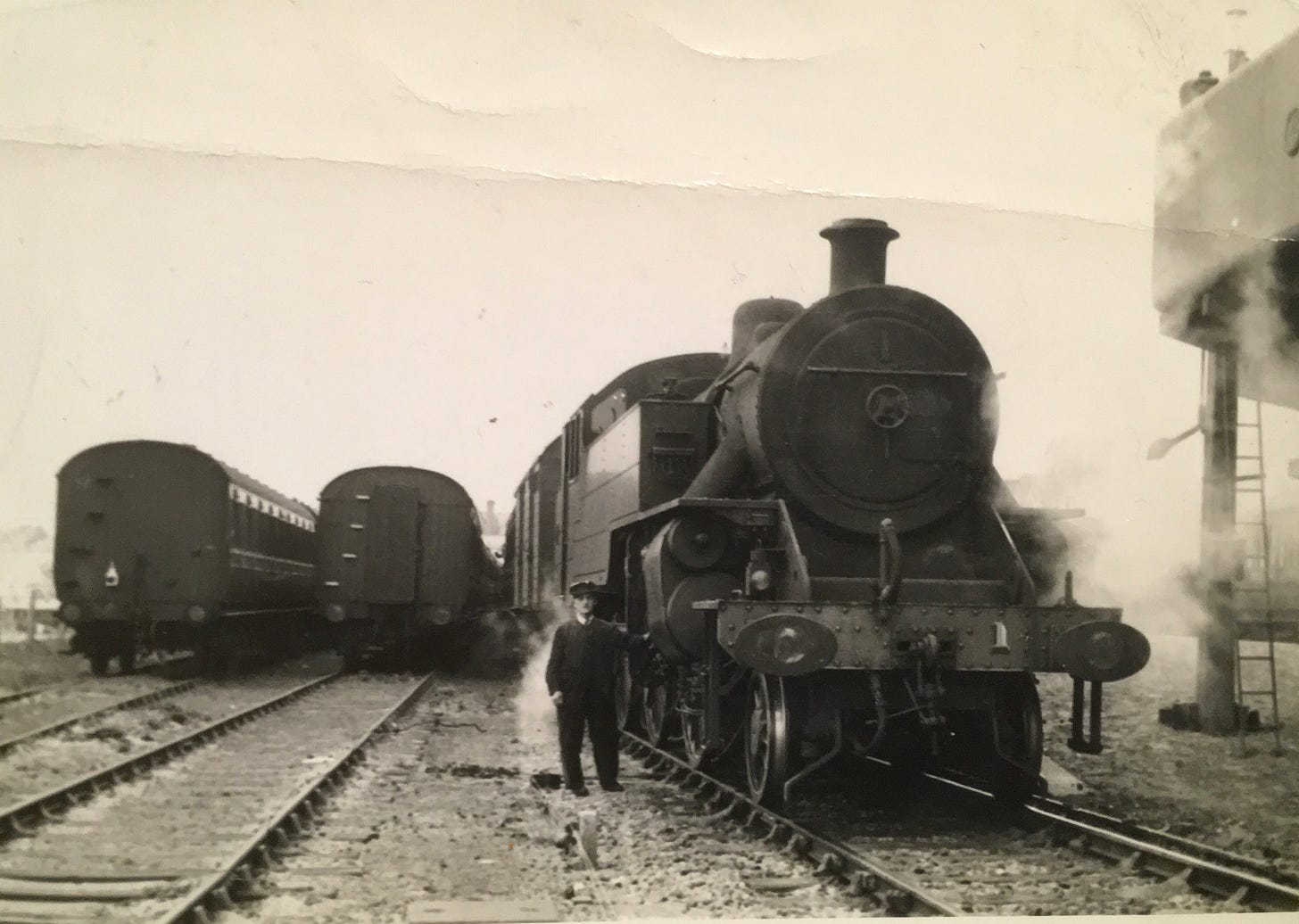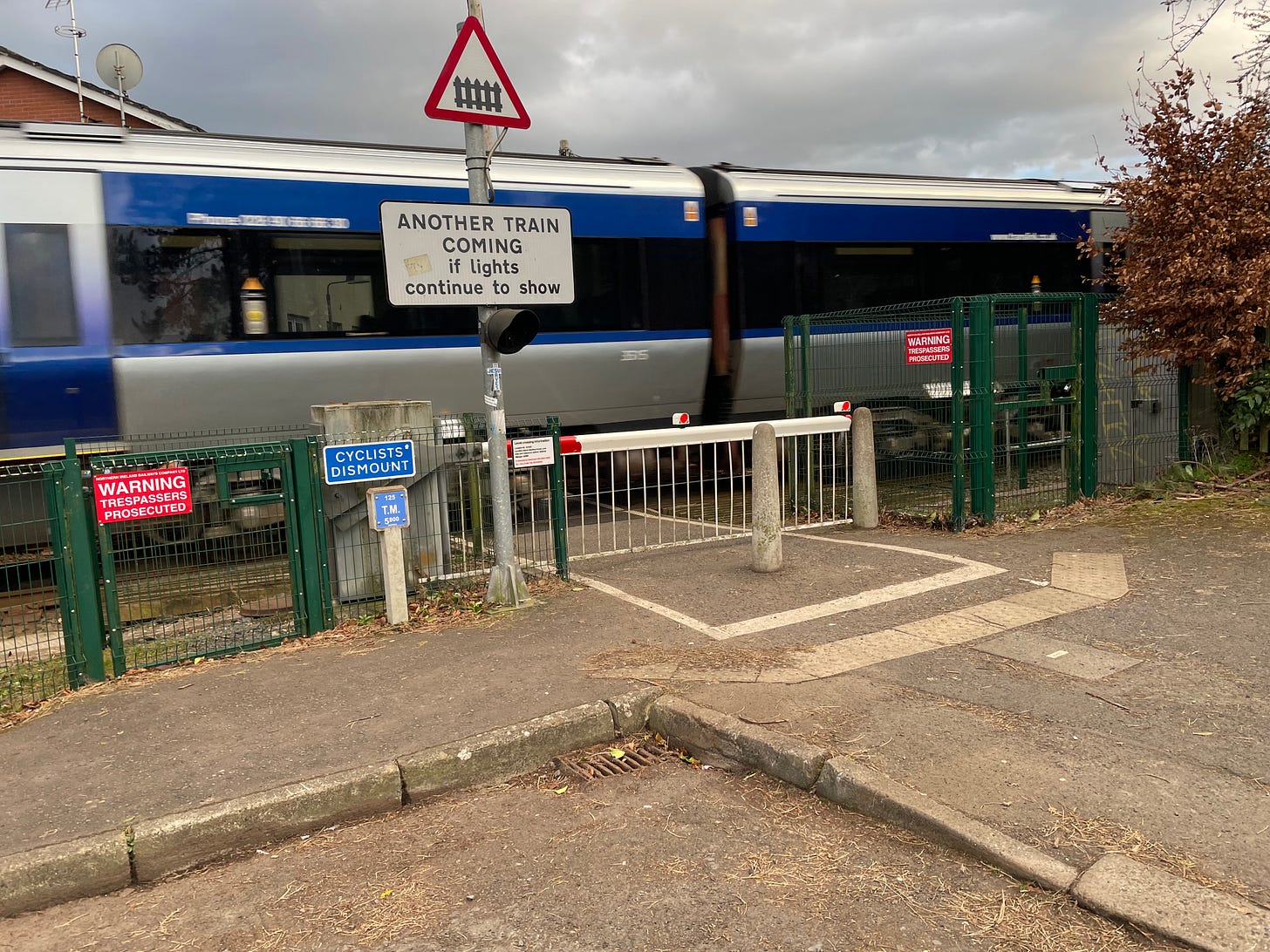A railway line runs close to the rear of our home. Local and express trains including the hourly ones serving the Belfast/Dublin route hurtle past every fifteen minutes and apart from the occasional sustained warning blast of an air horn we don’t pay them much attention. Visitors to our home are taken aback: “Does that noise not bother you?” It doesn’t. It is simply part of the soundscape of where we live; something we are used to.
Our paternal family has close connection with the railway. Granda Christy was a driver on a steam locomotive for the London, Midland and Scottish Railway (LMS) which also operated in Northern Ireland. A story is told of him stopping his engine on the Antrim Coast as he felt that the sound coming back to him from up ahead was not quite right. His intuitive experience was correct, boulders had fallen unto the track. Catastrophe avoided. A close call.
 |
| Christy TRACEY with his steam locomotive. Photo source unknown. |
Exterior sounds are one type of resonance and those inside another. When travelling by train, I love that rhythmic, clickety-clack of the wheels and that steely, acidic squeal of the rails. I often find myself internally reciting one of my all-time favourite poems, the wonderful, Night Mail by W.H. Auden which was composed to accompany a film documentary of the same name. Consider this opening verse
This is the night mail crossing the borderBringing the cheque and the postal orderLetters from the rich, letters from the poorThe shop at the corner, the girl next door
Say it with that clickety-clack and you get that lovely onomatopoeic sound of the train wheels. Why not stop reading this now and go look it up?
Go on, there’ll be another train of thought in a minute …
Back to where we live. We have a train station nearby and two level crossings, one for pedestrians only and another for people and vehicles. Protecting the traveller clearly figures in the minds of railway managers as there are several safety notices on display. And at the station you are instructed to stand well behind the platforms vivid yellow line.
All those warnings. Best not to get too close.
Those warnings were nowhere in evidence late last year when our travels took us to Vietnam. Among many cities we visited Hanoi and near our hotel was the aptly named Train Street. Apparently it is the place to visit to experience the regular and close encounter of a huge passenger train. Thousands of people turn up. The odd barrier, no yellow lines and few if any warning lights. Instead tiny businesses of bars, restaurants and shops ply their trade within inches of the passing trains. Merchants can be seen walking across the tracks, serving their customers and sometimes pulling back tables and chairs that maybe, just maybe are a little too close. While the train is still far enough away people place bottle caps on the tracks. These are recovered flattened to wafer thin after the train has passed over them.
This short video captures the sense of proximity and let’s face it, danger.
Train Street. Quite an experience. A thousand miles away from our day-to-day living.
Try to cross while our local level-crossing barrier is closed could open you up to a hefty fine.
Railway buffet services here aren’t about to serve platform drinks shaken and stirred by huge passing locomotives. And that’s as it should be. Leave that up close rail stuff to the railway staff.
I’ll still enjoy the trains going by, listening out for those long-carriage Belfast/Dublin ones and think about who is going where. I’m sure I’ll also think back to Hanoi and Train Street.
And with each blare of the modern day air horns I know I’ll remember my grandfather, translating those klaxon sounds to mental whistle blasts from the age of steam.




No comments:
Post a Comment
It is great to get comments, however you should know that these are moderated. It is fine if you disagree and want to challenge anything you have read. Let's aim for healthy debate and keep exchanges friendly and professional, respecting everyone's contribution.